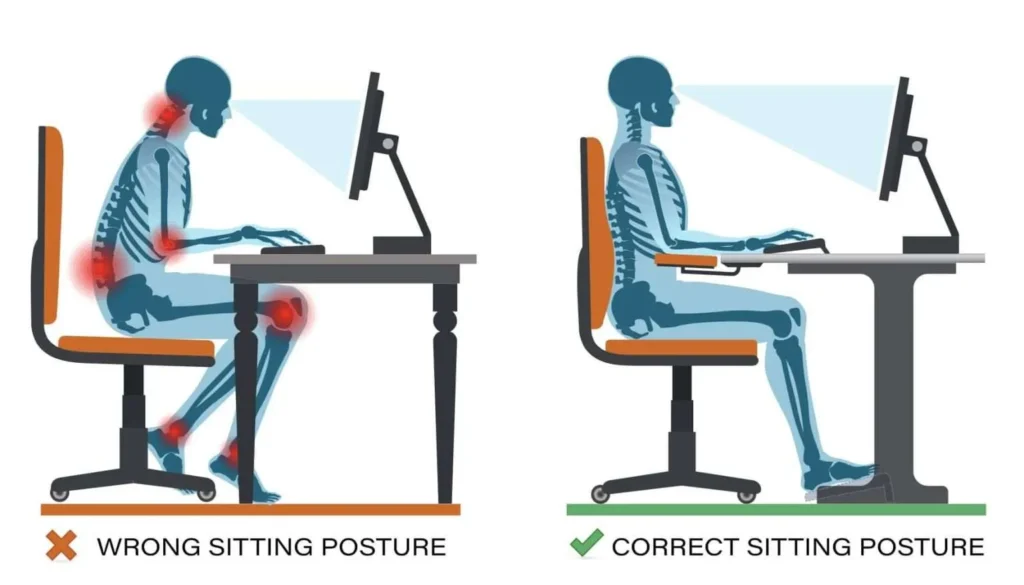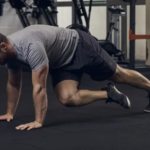We’ve all been there, haven’t we? You wrap up a marathon Zoom call or finally stand up after binge-watching your favorite show, and suddenly your lower back screams in protest. It’s that dull throb that makes you wince, wondering if you’re just getting older or if something’s really wrong. I remember my own wake-up call a few years back—I was glued to my computer for hours on end, chasing deadlines, and one day, standing up felt like torture. That’s when I started digging into why sitting causes back pain, and honestly, it’s more common than you think. Turns out, our modern lives, with all the desk jobs and screen time, are setting us up for this discomfort, but the good news is, it’s not inevitable.
What if I told you that understanding the real culprits behind that ache could change everything? It’s not just about “sitting too much”—it’s how we sit, what happens to our bodies over time, and those little habits we overlook. In this post, I’ll walk you through the why, share some eye-opening stats and stories from folks like you, and give practical ways to fight back. By the end, you’ll have tools to make your days less painful and more energized. Because let’s face it, life’s too short to let back pain slow you down.
Think about Jen, a 35-year-old graphic designer I know. She spent years hunched over her laptop, ignoring the twinges until they turned into full-blown agony. But with a few tweaks—like better posture and quick stretches—she’s now pain-free most days. Stories like hers remind me that small changes can make a huge difference. So, let’s dive into what really causes that back hurt after sitting and how you can prevent it for good.
Key Takeaways
- Sitting causes back pain mainly due to poor posture, increased pressure on spinal discs, and weakened muscles from inactivity.
- Simple ergonomic adjustments, like proper chair height and screen placement, can reduce strain by up to 50% in some cases.
- Regular movement breaks and targeted exercises strengthen your core and back, helping prevent long-term issues.
- Lifestyle shifts, such as maintaining a healthy weight and managing stress, play a big role in easing chronic aches.
- If pain persists despite changes, see a doctor—early intervention can avoid bigger problems down the line.
Why Sitting Is Secretly Sabotaging Your Back
Picture this: You’re settled into your chair, coffee in hand, ready to tackle the day. But as hours tick by, that comfortable spot turns into a trap for your spine. We’ve all heard the phrase “sitting is the new smoking,” and while that might sound dramatic, there’s truth in it when it comes to back health. Sitting causes back pain because it throws off your body’s natural alignment in ways you might not notice until it’s too late.
First off, when you sit for long stretches, your spine bears more weight than when you’re standing or moving. In fact, sitting can increase the load on your lower back discs by up to 40% compared to standing. That’s like stacking extra books on a shelf that’s already wobbly. Over time, this pressure can lead to wear and tear, making those discs bulge or even herniate. And if you’re slouching—like most of us do without thinking—it reverses the natural curve of your lower back, stretching ligaments and tiring out muscles.
But it’s not just the mechanics; our sedentary lifestyles amplify the problem. Studies show that people who sit more than six hours a day have a 33% higher chance of chronic back pain. Think about it— globally, low back pain affects about 7.5% of people at any given time, and much of that ties back to how we spend our days glued to chairs. I once chatted with a friend who switched to a remote job, and within months, her back was killing her. She realized it wasn’t the work; it was the endless sitting without breaks. Have you noticed something similar in your routine?
The Hidden Toll on Your Muscles and Posture
Digging deeper, prolonged sitting weakens the muscles that support your spine. Your core and back muscles get lazy when they’re not used, leading to imbalances. For instance, tight hip flexors from sitting shorten and pull your pelvis forward, creating that dreaded “anterior tilt” that strains your lower back. It’s like a chain reaction—weak glutes, tight hamstrings, and suddenly every movement hurts.
And let’s not forget posture. Slumping forward overstretches spinal ligaments and compresses nerves, which can trigger spasms or even sciatica. A study from Harvard Health points out that poor sitting habits are a top reason for unidentified back pain, often stemming from muscle fatigue. Remember, your body craves movement; denying it that is like starving a plant of sunlight.
The Anatomy Behind the Ache: What’s Really Happening Inside
To truly get why sitting causes back pain, we need to peek under the hood at your spine’s inner workings. Your back isn’t just a stack of bones—it’s a complex system of vertebrae, discs, muscles, and nerves designed for motion, not stillness.
Those spongy discs between your vertebrae act as shock absorbers, but sitting squishes them unevenly, especially in the lower back. Over hours, this can cause dehydration and stiffness in the discs, making them prone to injury. Experts at the Cleveland Clinic explain that sedentary behavior leads to muscle stiffness and higher disc pressure, particularly in the lumbar area.
Then there’s the role of inflammation. When muscles stay inactive, blood flow slows, and waste products build up, sparking low-grade inflammation that amplifies pain. It’s why that ache feels worse after a full day at the desk. As one physical therapist I know puts it, “Your back is begging for a break—ignore it, and it’ll yell louder.”
Real-Life Example: Mark’s Story of Desk-Induced Discomfort
Take Mark, a 42-year-old accountant. He loved his job but hated the constant lower back twinge after audits. Turns out, his slouched posture was compressing his sciatic nerve, a common issue from prolonged sitting. After learning about spinal anatomy through a quick online course, he started incorporating movement, and the pain faded. Stories like his show that knowledge is power—understanding your body helps you heal it.
Common Mistakes We Make While Sitting (And How to Spot Them)
It’s easy to blame sitting itself, but often, it’s our habits that turn a chair into a pain machine. One big offender? Crossing your legs or leaning to one side, which tilts your pelvis and strains one side of your back more than the other.
Another trap is staring down at your phone or laptop, craning your neck forward. This “tech neck” adds extra weight—up to 60 pounds of force on your spine at a 60-degree angle. I caught myself doing this during late-night scrolls, and it always left me sore the next day. Or how about soft couches? They might feel cozy, but they let your back round out, fatiguing ligaments.
Stress plays a sneaky role too. Tense shoulders and clenched jaws tighten back muscles, worsening the ache. A recent review found that sedentary work without posture awareness boosts low back pain risk moderately. Ask yourself: Are you holding tension while you sit?
Quick Self-Check: Are You Guilty of These?
- Do your feet dangle off the floor? That pulls on your lower back.
- Is your screen below eye level? It forces hunching.
- Skipping breaks? Even 5 minutes up can reset your spine.
Spotting these early can save you from bigger issues.
Simple Adjustments to Your Workspace for Pain-Free Days
The fix doesn’t have to be fancy—start with your setup. An ergonomic workspace can cut back pain risks significantly by promoting neutral posture.
Begin with your chair: Choose one with lumbar support that keeps your lower back’s curve intact. Adjust so your feet are flat on the floor, knees at 90 degrees, and hips slightly higher than knees. If needed, add a footrest. At UCLA Health, they recommend keeping upper arms parallel to your spine for less strain.
Your desk and screen matter too. Position your monitor at eye level, about an arm’s length away, to avoid leaning forward. Elbows should rest at 90 degrees on the desk. I swapped my old setup for a standing desk converter, and it was a game-changer—alternating positions keeps things dynamic.
DIY Ergonomic Hacks on a Budget
- Use a rolled towel for lumbar support if your chair lacks it.
- Stack books under your monitor for height.
- Set a timer for posture checks every 30 minutes.
These tweaks, inspired by Mayo Clinic guidelines, can make sitting less harmful. For more details, check out their office ergonomics guide here.
Easy Exercises to Strengthen Your Back and Beat the Sit-Down Blues
Movement is medicine, especially for back pain from sitting. The key is consistency—aim for 10-15 minutes a day of targeted stretches and strengthens.
Start with the knee-to-chest stretch: Lie on your back, pull one knee to your chest, hold for 20 seconds, switch sides. This eases lower back tension. Then try the bridge: Lie flat, lift your hips off the floor, hold for 5 seconds. It builds core strength to support your spine.
For desk-bound days, seated twists work wonders. Sit tall, twist gently to one side, hold, repeat. Harvard Health suggests these for flexibility and pain relief. I do a quick cat-cow stretch in my chair—arch and round your back like a cat—to loosen up.
A 5-Minute Routine You Can Do Anywhere
- Shoulder blade squeeze: Pull shoulders back, hold 10 seconds.
- Hip flexor stretch: Stand, lunge forward gently.
- Lower back rotational stretch: Lie down, knees to one side.
Studies show replacing an hour of sitting with activity cuts back pain risk by 2-8%. Get more exercise ideas from the British Heart Foundation here.
Lifestyle Changes for Long-Term Relief: Beyond the Chair
Fixing back pain isn’t just about your desk—it’s a whole-life approach. Start by weaving in more activity: Walk during calls or take stairs. Reducing sedentary time by 40 minutes daily can prevent pain from worsening.
Weight management helps too; extra pounds strain your back. A healthy diet with anti-inflammatory foods like salmon and berries can ease aches. Sleep on a supportive mattress, and manage stress with mindfulness—tension tightens muscles.
Quit smoking if you do; it impairs blood flow to discs. And hydrate—discs need water to stay plump.
Sarah’s Transformation: From Pain to Power
Sarah, 28, battled back pain from her office gig. She added yoga twice a week and cut sitting by standing more. Within months, she felt stronger. “It’s not about perfection,” she says, “just moving more mindfully.”
For lifestyle tips, see Cleveland Clinic’s guide here.
When to Seek Professional Help: Don’t Ignore the Signs
Sometimes, DIY fixes aren’t enough. If pain lasts over a week, shoots down your leg, or comes with numbness, see a doctor—it could signal a herniated disc or stenosis.
Physical therapy or chiropractic care can help, but always consult first. As per Spine-Health, early intervention prevents chronic issues here.
Final Thoughts
We’ve unpacked why sitting causes back pain—from disc pressure to poor habits—and armed you with tools like ergonomics, exercises, and lifestyle shifts to fight it. Remember, it’s about progress, not perfection; small steps add up to big relief.
You’re not alone in this struggle, and with compassion toward your body, you can reclaim comfort. Start today: Adjust your chair, take a stretch break, and feel the difference. For more on health hacks, explore Upvolta’s fitness section—your back will thank you.
FAQ
Why does my back hurt only after sitting for a while?
Sitting puts extra pressure on spinal discs and can weaken supporting muscles over time, leading to strain. Poor posture often makes it worse.
Can sitting cause permanent back damage?
Prolonged poor sitting habits can lead to issues like disc degeneration, but with changes, you can prevent or reverse much of it. Always check with a doctor for concerns.
What’s the best chair for avoiding back pain?
Look for one with adjustable height, lumbar support, and armrests to keep your spine neutral. Ergonomic options help maintain natural curves.
How often should I take breaks from sitting?
Aim for a break every 30 minutes—stand, stretch, or walk for 1-2 minutes to reduce pressure and improve circulation.
Are standing desks better for back pain?
They can help by allowing position changes, but alternate with sitting to avoid leg strain. Proper setup is key.
What exercises are safe for beginners with back pain?
Start gentle: Knee-to-chest stretches or bridges. Consult a pro if pain is severe to avoid aggravating it.
Does weight affect back pain from sitting?
Yes, extra weight adds strain to your back. Maintaining a healthy weight through diet and activity can ease symptoms.
Can stress make sitting-related back pain worse?
Absolutely—stress tenses muscles, amplifying aches. Techniques like deep breathing can help.
Is walking enough to prevent back pain?
It’s a great start for overall health, but combine with core-strengthening exercises for better back support.
When should I see a doctor for back pain?
If it’s persistent, worsens with movement, or includes numbness/tingling, seek help promptly to rule out serious causes.


